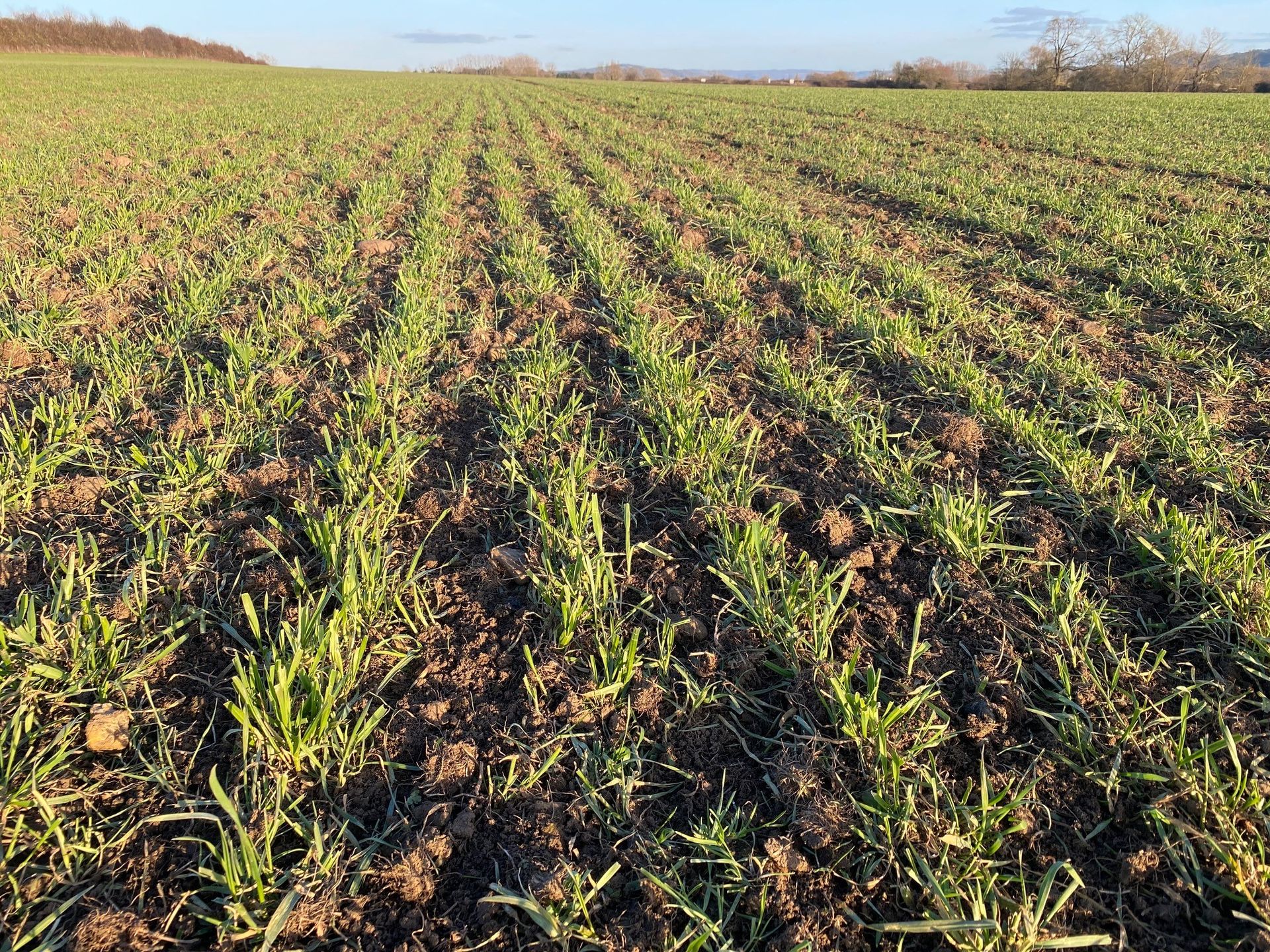This week, inspired by a recent farm visit to Grange Farm near Tewkesbury, I am going to discuss the practice of sheep grazing cereals in late winter as an agronomic tool for crop management. Once considered the "golden hoof" for their contribution to soil fertility, should more organic farmers be trying to include this practice in at least part of their rotations?
There are multiple reasons for doing it and appears to be little downside as long as it is managed effectively. Often the main reasons cited is to promote tillering of the cereal, to remove diseased foliage and to consolidate the soil with the trampling of their hooves. They can also be effective at helping control weeds and obviously add manure as a fertility source for the crop. The additional forage provided is often minimal but may be enough to offer a much needed bite in winter and to keep the sheep off of grass destined for a first cut in Spring or needed for grazing later. One additional benefit that is less well known is that grazing and the removal of above ground biomass can promote root growth which can help improve nutrient uptake and help make the crop more resistant to drought.
With all the benefits that can come and with little reason to expect a yield penalty from the practice, with the positive contributions more than making up for any knock back in crop growth and development it should probably be more widely used. Another reason to do so may be to improve the effectiveness of a comb harrow following grazing, where the reduced foliage of the crop makes it less vulnerable to damage from the tines, and therefore can allow for faster travel which also improves the weed control.
At Grange Farm sheep were being left on a field for around a week at a stocking rate of about 15 sheep an acre. Around three days after the sheep are removed, a comb harrow is run through the crop to help remove weeds and mineralise some nutrients. Below a wheat crop around 10 days after the sheep had been taken off, already showing good signs of recovery, with the growth hopefully able to give it a head start on the weeds following harrowing. The sheep seem to control some weeds very well, with charlock one they seem to preferentially graze on and blackgrass too can be controlled.

The practice of grazing cereals is being used on both wheat and oats at Grange farm. The oats seem more resilient to the practice and have been grazed harder, although the crop was slightly less advanced at the start of grazing than was the wheat. Below the grazed oats a few days after the sheep had been taken off.
Below the Winter oats after tine harrowing showing just how little foliage is left following the grazing, though this is unlikely to cause any issue, although if the crop is grazed too hard and isn't vigourous in it's regrowth, there could be an opportunity for weeds to get more of a foothold. The key thing when grazing cereals is not to let the sheep eat the developing ear and as long as the grazing takes place ahead of stem extension, there is no risk of this.
Whilst the income is small from renting the ground if the farm doesn't have its own sheep, the benefits to the crop and rotation should really encourage organic farmers to look at implementing the practice within their rotations.
Below some links for further reading;
Sheep and wheat - farmer insights | Agricology
Grazing livestock on winter cereals could help aid soil biology - FarmingUK News
No, those Sheep are not out!!! - Farm Consultancy (fcgagric.com)